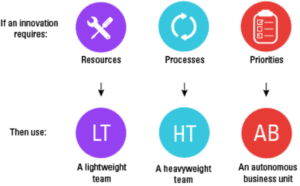Routinely, at airport gates across the country, passengers are asked to volunteer to receive cash in exchange for taking later flights or making alternative arrangements. But as United Airlines recently discovered—along with the rest of the news-consuming world—it is much more difficult to convince passengers to make such an election after they have boarded the flight. Twenty minutes earlier, passengers might have been game for a change in their plans, but change is much harder when the journey has already been set in motion.
Academia, with its traditional regalia and storied institutions, is no stranger to resistance to change. Despite a plethora of new models coming to market in higher education—bootcamps, badges, microcredentialers, and others—traditional institutions can find that their attempts to transform are whittled down into small tweaks. This resistance to change is not entirely a bad thing, and as we describe in a recent paper, “College Transformed,” it can be a sign of a robust organizational culture. But cultures that reject innovation can frustrate leaders who are innovating against higher education’s major challenges, and organizations that can’t evolve inevitably lose relevance in eras of disruptive innovation.
To give innovation a fighting chance, leaders need to take stock of their business models and think through the implications of innovation for the institution’s resources, processes, and priorities.
Innovation happens within a business model
All organizations have a “business model” that goes beyond the revenues and expenses that make the operation fiscally sustainable. A business model also includes an organization’s resources, processes, and priorities. For colleges and universities, resources include people like faculty, staff, alumni, and students; financial resources like endowments and grants; intellectual property; physical space, including campus buildings but also the surrounding community; reputation; and relationships. Processes are the patterns of interaction and decision making that organizations use to solve problems. In an academic setting, these include governance practices, decision hierarchies, promotion systems, registration and financial aid procedures, planning cycles, budget protocols, and performance evaluations—all the ways that things get done on campus. Priorities are the criteria by which organizations and employees make decisions. At a successful organization, employees have a clear and consistent sense of the organization’s priorities; this allows the employees to make independent decisions in keeping with the overall strategy of the organization.
Colleges and universities are distinct from other organizations in many ways, but when it comes to change, they are no different. Organizations often accept a reshuffling of resources, which are inherently flexible and can be deployed in a variety of ways. But processes are harder to change, and innovations that run counter to a school’s existing priorities will almost certainly be rejected.
What is the priority at colleges and universities? Most commonly, it’s prestige. Whether it’s referred to as quality, reputation, or rigor, schools are interested in making decisions that enhance their prestige—and staff and faculty are likely to be wary of initiatives that might impair it. This can include many initiatives that have the potential to lower costs and increase access for students like online programs, competency-based education, and models that prioritize access over student selectivity.
Organizational strategies to move innovations forward
So what’s the solution? Innovators should build heavyweight teams to support process changes and autonomous units to support models that risk being perceived as running against the grain of organizational priorities.
A heavyweight team is more than just another committee. It’s a group of employees pulled out of their departmental silos that have the authority to put new processes in place. This is critical. This team can’t just be charged with coming up with recommendations; it actually has to be empowered to design new processes to support an innovative model.
Autonomous units need even more separation from the way the rest of the campus does business. Institutions, like Northeastern University and Southern New Hampshire University, have been successful at building out totally new models with different priorities. But they have let those innovations come together in separate office spaces with distinct cultures and practices. The goal is to let the innovation change the university and to avoid having the feedback loop run the other way.
Keep trying
A common thread in the institutions profiled in “College Transformed” is persistence. Many of the organizations butted up against internal or external resistance, and some of them scrapped initial experiments altogether. For example, Simmons College’s successful online programs were built only after a first attempt failed.
Small steps can also provide critical experience required to go further. Southern New Hampshire University first built a more traditional online program—but this experience provided the institution with the essential insights on adult learners that inspired College for America.
The barriers to change are both internal and external—and they are real. But institutional leaders are faced with challenges that status quo models cannot address. Innovation is necessary, and while challenging, it is possible. And it holds the tantalizing promise of enabling financial sustainability for institutions, as well as affordable and equitable access to higher education for the next generation of students.
For more, see:




